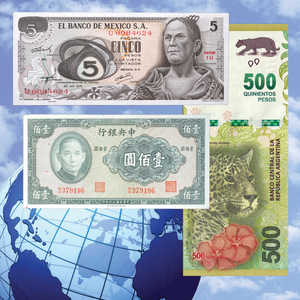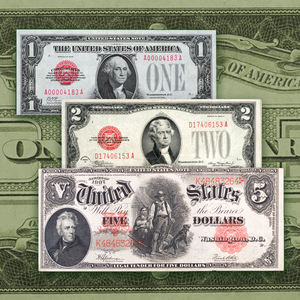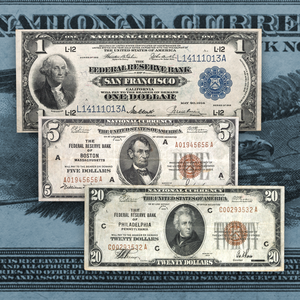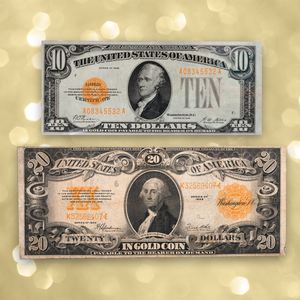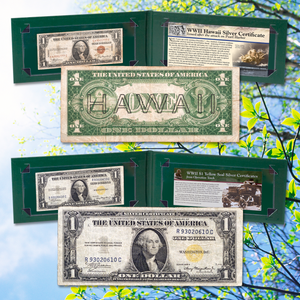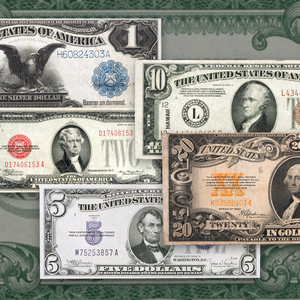Paper Money
There's a rich history both on and behind US paper currency, which makes collecting it such a satisfying hobby. The country's initial foray into paper money dates from the American Revolution and the short-lived Continental Notes used to finance the War for Independence. But they were issued in such quantity that they lost their value and disappeared from circulation.
Read more
It would take the Civil War before Congress authorized, again, the general circulation of paper currency. In 1863, the US Treasury Department engraved and printed the first paper currency. They were called Fractional Notes because they were in denominations of less than one dollar.
BEP and the Federal Reserve Bank
In 1874, Congress passed legislation establishing the Bureau of Engraving and Printing (BEP) to manage the design, printing and, initially, the distribution of all paper currency. A succession of ever-larger printing plants went up in Washington, DC.
By 1985, the BEP was looking for a satellite facility west of the Mississippi River. It chose Fort Worth, TX for a number of reasons. High on that list was cutting transportation costs to get newly printed paper currency to Federal Reserve Banks in San Francisco, Kansas City and Dallas for regional distribution.
In 1913, Congress had passed the Federal Reserve Act, creating a central monetary system to promote the effective operation of the economy and to serve the public interest. To help carry out those functions – including the distribution of all paper currency – it established 12 Federal Reserve Banks located in major financial districts around the country. They also serve the U.S. territories and commonwealths.
Beginning paper currency collectors can read our useful information on how to start a collection. More expereienced collectors will enjoy our advanced collecting advice. For a fun read, check out Littleton Coin's Heads & Tails blog on collecting fancy serial numbers.
Design History
The engraver's art is on full display on paper currency, and the design details on Federal Reserve Notes make them especially collectible. At the Littleton Coin Company's Learn Center you can discover fascinating and more detailed information about the nicknamed "horse blankets" and the small-size Federal Reserve Notes that replaced them! We blogged about two specific examples of oversized paper currency in Heads & Tails. One looks at the note nicknamed "funnyback" and the other looks at paper money that featured Christopher Columbus.
Thwarting Counterfeiters
The BEP has a legal mandate to foil counterfeiters of our nation's paper currency. It initially did so with ornate, complex designs which contribute to their collectability. In 1991 the BEP added microprinting and translucent security threads as deterrents. The next steps in protecting our paper currency were off-center portraits, watermarks, color-shifting ink and concentric fine-line printing. It is illegal to counterfeit US paper money. This Heads & Tails blog looks at some of the schemes that were successfully thwarted.
In a slightly different vein about fake paper currency, here's light-hearted blog on movie money.
Special Issues
Littleton Coin Company's Learn Center is helpful if you're looking just to collect special Federal Reserve Notes. Many numismatists develop an interest in World War II history and find these unusual examples of wartime paper currency worth adding to their collection.
Two final notes on collecting paper currency
If you are wondering how to protect the paper currency you're acquiring as you build a collection, check out our tips at our Learn Center.
In 2019, Littleton launched the American Paper Money Club. You can find out more about it here.



